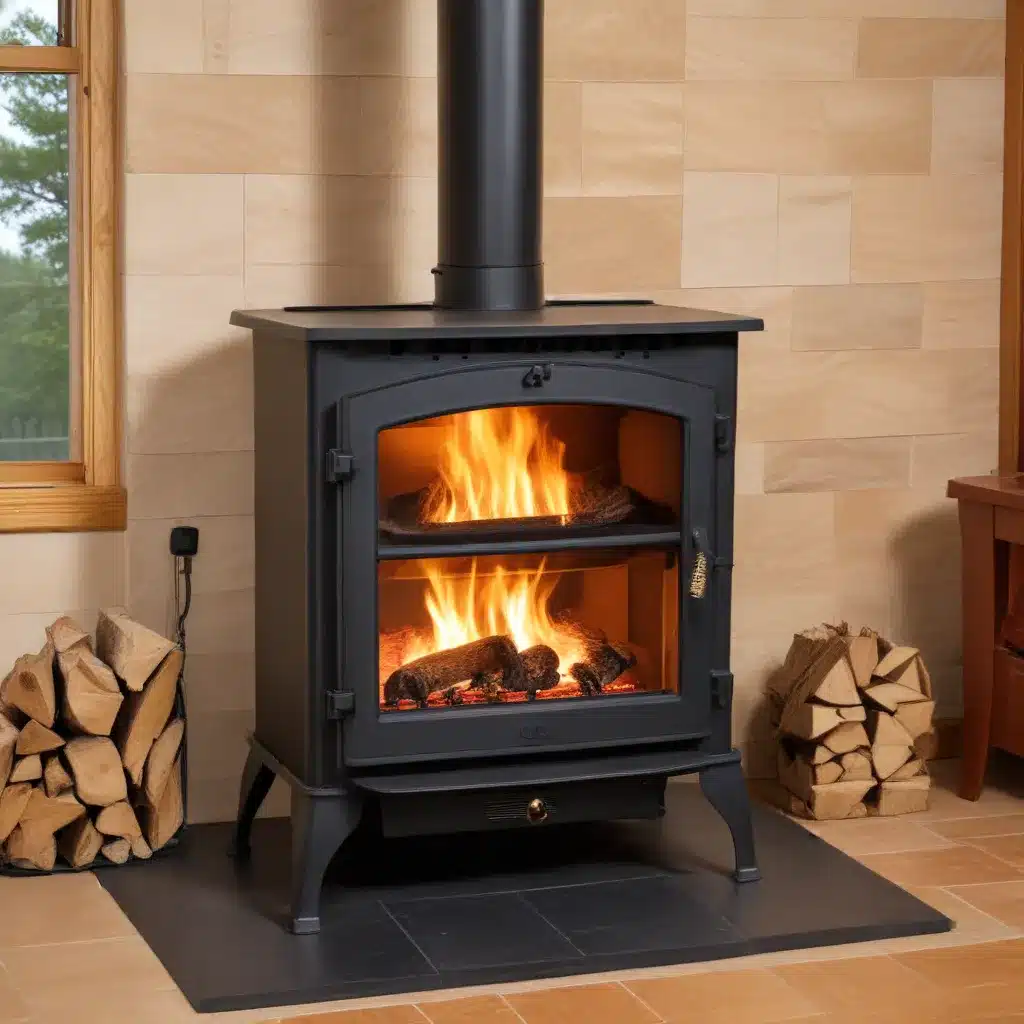
Unlocking the Full Potential of Wood Stoves for Sustainable Heating
As a seasoned expert in wood stoves and heating solutions, I’m excited to share practical tips and in-depth insights to help you optimize the efficiency of your wood-burning stove. In this comprehensive guide, we’ll explore strategies for eco-friendly heating, covering everything from proper maintenance and heat distribution to energy-saving techniques and sustainable fuel options.
Mastering the Art of Wood Stove Ignition
Starting a fire in a wood-burning stove requires some preparation, but with the right approach, you can maximize heat output and burn duration. For maximum heat, begin by ensuring your stove’s air vents are fully open, allowing for optimal airflow. When adding wood, arrange the logs in a criss-cross pattern, creating pockets for air circulation. This configuration not only helps the fire ignite more quickly but also allows the wood to burn longer and more efficiently.
To avoid uneven heating, consider placing a fan on top of the stove. This simple yet effective method pushes the warm air outward, distributing it more evenly throughout the room. For a more powerful solution, you can install a blower system, which efficiently circulates the warm air around the house. For comprehensive heating, connect your wood stove to a central heating duct system. Although this option may be more expensive upfront, it ensures even heat distribution, providing a cozy and comfortable living environment.
Leveraging Passive Solar Design for Enhanced Efficiency
Incorporating passive solar design principles can significantly boost the energy efficiency of your wood-burning stove setup. Passive solar homes are designed to take advantage of the sun’s natural energy, reducing the overall heating and cooling loads.
One key aspect of passive solar design is strategic window placement. Ensure that a portion of the south-facing side of your home has an unobstructed view of the sun. This allows the sun’s rays to penetrate through the windows, providing natural warmth during the colder months. To prevent overheating during the warmer seasons, consider incorporating shading devices, such as overhangs, awnings, or trellises, to control the amount of sunlight entering the home.
Additionally, the use of thermal mass, such as masonry floors or walls, can help store and release heat, further enhancing the efficiency of your wood stove. As the sun’s rays warm the thermal mass, it absorbs the heat, which is then gradually released into the living spaces as the room cools down.
Optimizing Heat Pump Integration for Year-Round Comfort
For a truly comprehensive heating solution, consider integrating your wood stove with a high-performance heat pump system. Heat pumps are widely recognized as the most efficient heating option, even in the coldest winter conditions.
If you have both a heat pump and a wood stove, it’s important to understand how to maximize their efficiency. Heat pumps operate most efficiently when maintaining a steady temperature, so it’s best to avoid frequent temperature adjustments. Instead, set your heat pump to a comfortable temperature and leave it be, as adjusting it for short periods may actually use more energy than keeping it consistent.
Additionally, the placement of your heat pump’s indoor unit can impact its performance. If the unit is mounted high on the wall, the rising warm air may not be felt as strongly at the floor level. Experiment with different fan speed settings to find the optimal airflow distribution throughout your living spaces.
Sustainable Fuel Sourcing and Storage
Selecting the right fuel is crucial for maintaining the efficiency and eco-friendliness of your wood stove. Opt for well-seasoned, dry hardwood logs, as they burn more cleanly and generate more heat than soft or green wood. Properly storing your wood in a dry, well-ventilated area can also enhance its burning performance.
Consider exploring alternative sustainable fuel options, such as wood pellets or compressed wood bricks. These fuels often burn more efficiently and produce fewer emissions compared to traditional firewood. When sourcing your fuel, prioritize local and responsibly harvested sources to minimize your carbon footprint.
Comprehensive Maintenance and Safety Protocols
Regular maintenance is essential for ensuring the optimal performance and longevity of your wood stove. Routinely clean the dust filters on your stove, and follow the manufacturer’s recommendations for professional cleaning and servicing. Keeping the outdoor unit free from debris and snow accumulation will also help maintain peak efficiency.
In addition to maintenance, prioritize safety by installing the necessary safety devices, such as smoke detectors and carbon monoxide alarms. Familiarize yourself with the proper procedures for starting, tending, and extinguishing a fire, and always exercise caution when handling a wood-burning stove.
By implementing these strategies, you can unlock the full potential of your wood stove, enjoying eco-friendly, efficient, and cozy heating throughout the colder months. Remember, woodstoveheaters.com is your go-to resource for more information and expert guidance on all things related to wood stoves and sustainable heating solutions.
Optimizing Wood Stove Efficiency: Key Takeaways
- Properly arrange wood logs and ensure adequate airflow for maximum heat output and burn duration.
- Utilize fans or blowers to distribute heat evenly throughout your living spaces.
- Integrate passive solar design principles, such as strategic window placement and thermal mass, to enhance overall efficiency.
- Leverage high-performance heat pumps in conjunction with your wood stove for year-round comfort and energy savings.
- Choose sustainable fuel sources, such as well-seasoned hardwood or alternative options like wood pellets or compressed bricks.
- Maintain your wood stove regularly and prioritize safety protocols for optimal performance and peace of mind.
By implementing these strategies, you can create an eco-friendly, efficient, and cozy heating solution that will keep your home comfortable all winter long.


